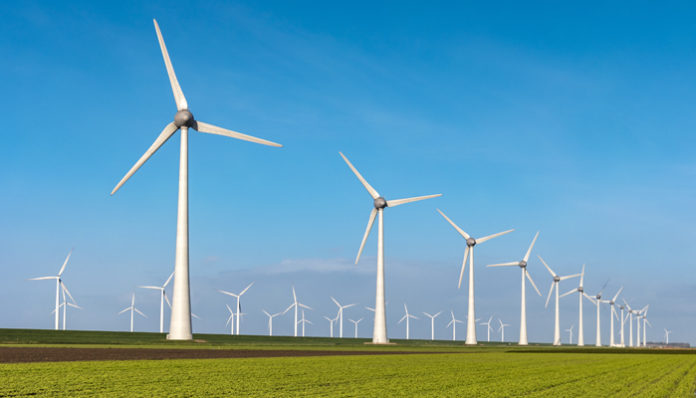Start the week with the latest in the geoengineering world. Here’s the GeoWire conversation for the week of July 13. WORK SMARTER.
BIG PROJECTS
Europe’s largest onshore wind farm is rapidly development in Ukraine. The EUR 1 billion project, which will produce 800 MW, will be one of the 15 largest sites in the world. Significant geosynthetics are being used across its three phases. [Geosynthetica]
The US Congress House Select Committee on the Climate Crisis has introduced a sweeping environmental plan, “Solving the Climate Crisis: The Congressional Action Plan for a Clean Energy Economy and a Healthy, Resilient, and Just America.” Among the high-altitude goals: protecting 30% of lands and coastlines by 2030 and full transition to renewable energy by 2050. [Climate Crisis Committee]
ENVIRONMENTAL IMPACT
#ClimateChange: Modeling suggests that ocean waves will get larger, especially in the Southern Ocean. Infrastructure designs must anticipate the challenges of more intense waves on coastlines. [Eos]
Bechtel sees the world approaching a watershed moment for clean energy, as the decreasing cost of alternative solutions meets swelling public support. [Bechtel]
The US Army Engineer Research and Development Center (ERDC) has published a video about the multi-disciplinary effort to mitigate the threat of PFAS in the environment. [ERDC]
FINANCE
The 5th installment in Tensar‘s series on COVID-19 and its impact on construction looks at funding shortfalls and potential stimulus in the United States. [Roads & Bridges]
Sovereign wealth funds (SWFs) are under a lot of pressure to liquidate some assets, given global market uncertainties, volatile oil and gas prices, and COVID relief needs. How nations handle their SWFs will impact their investment in other areas, such as infrastructure. [IPE]
GEOSYNTHETICS
VIDEO: Dr. John McCartney‘s presentation on Geosynthetics in Geothermal Heat Exchange Applications [Geosynthetica via Geotecnia Brasil]
VIDEO: Dr. Tim Stark, P.E. and Doug Evans (Ohio DNR) recall a late 1990s geosynthetic-lined slope failure at a municipal solid waste (MSW) site. [FGI via Geosynthetica]
In the San Diego area, they are calling for more piles and reinforcement for a well used railway line. The protection strategy could benefit from more geosynthetics. [RT&S]
GOVERNMENT
The US Federal Highway Administration (FHWA) has made $60 million in grants available for its broad-based Advanced Transportation and Congestion Management Technologies Deployment Program (ATCMTD). The program helps develop model deployment sites for large-scale installations of technologies that improve safety, efficiency, and system performance. [FHWA]
Australia has a bit of work to do in Sydney to better prepare for future drought. An audit found that Sydney’s water supply was years behind in responding to drought, which has threatened water security. Sydney is the country’s most populous urban location. [Guardian]
TECHNOLOGY
Drone technology is really assisting geotechnical engineering and project work flows. [Deep Foundations Institute]
There are so many great stories in engineering, but it can feel hard to recognize the achievements of your field, your colleagues, even yourself in stressful times. Here are some tips on fighting back against “doomscrolling”. [WIRED]
Though its focus is the legal field, Ipro‘s reminder on redactions and technology merits consideration by other professionals too. [Ipro]
This is the July 13, 2020 GeoWire from Geosynthetica. GeoWire is published on Mondays with thought-leading links to help infrastructure professionals work smarter. News and ideas to share? Contact us.
Previous GeoWire Editions
July 6, 2020
June 29, 2020
June 22, 2020
June 15, 2020
June 8, 2020
June 1, 2020












